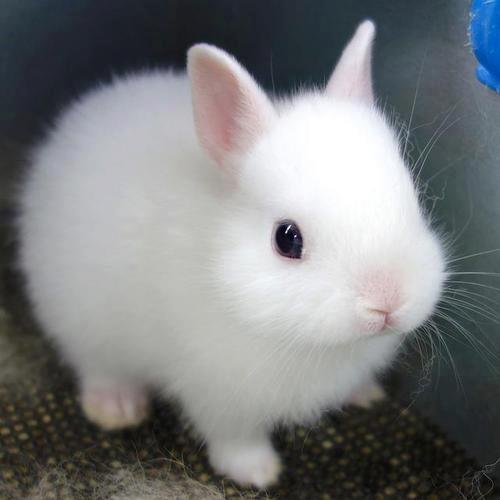
A dwarf rabbit is a very popular pet. Its small size, adorable appearance and affable character makes it the perfect pet for those who live in an apartment. This tiny little rabbit was developed in the Netherlands at the beginning of the 20th century. This was done by cross breeding a small wild rabbit with domestic breeds. It was only when it arrived to England that breeder were able to standardize its color and appearance.
- Europe
Physical appearance
This dwarf rabbit is very small, with a length of around 33 or 50 centimeters, reaching an adult weight of between 0.8 and 1.5 kg.This rabbit is short and compact with short rounded ears and a small flat nose. They have a soft and short hair that comes in a wide variety of different colors including white, brown, gray or black.
Behavior
Dwarf rabbits, unlike other rabbit breeds, tend to be nervous and fearful. It is important to accustom your dwarf rabbit to other people and play in order to avoid this isolated behavior.
They love to be caressed behind the ears by those they trust. They are in fact quite affectionate little rabbits. Because of its size, this animal also tends to be afraid of other pets such as dogs and cats, and should therefore be socialized from when it is a baby bunny. Make sure your bigger animals are also respectful of size difference and don’t accidentally hurt your dwarf rabbit.
Care
It is important that a dwarf rabbit has a quiet and calm place to rest when you leave it in its cage. It needs to constantly be isolate from drafts, direct sunlight or excessive noise. Try to keep other pets from approaching until it becomes accustomed to their presence.
Be incredibly careful when handling this little animal, as a rough gesture can easily fracture its back.
You should also constantly brush its coat in an attempt to get rid of unwanted dead hair. Rabbits clean themselves, therefore it is not necessary to bathe your dwarf rabbit. However, if you notice a small dirt mark you can of course wipe it off with a damp cloth.
Provide your dwarf rabbit with toys to make sure that it doesn’t get too bored and so that it has something to nibble on. Take care to make sure that the toy is rabbit appropriate.
Make the cage base is covered in shavings to soak up any urine. In addition, it is important that this cage has a rabbit water bottle, food and a nest where it can rest. And if you want to take your rabbit out of its cage, make sure it is constantly supervised.
Lastly, pay attention to food quantity and quality, feed must be varied due to age and size.
Health
Here is a list of the most common diseases that dwarf rabbits can suffer from:
- Myxomatosis: is a virus transmitted by insects such as ticks, mosquitoes or gadflies. This virus can be detected through the appearance of an inflamed vulva and/or with the appearance of pustules around mucous membranes of a rabbit. This virus can eventually can cause blindness in our little pet. If symptoms are notices you must go to the veterinarian immediately to treat this virus appropriately.
- Tularemia: is a bacterial disease that is transmitted through mites and fleas. We can identify this ailment as a rabbit suffering from this will stop eating.
- Rage: Like cats or dogs, a rabbit can also exhibit rabies. This is very rare and can only happen if you adopt a rabbit from a less common domestic origin.
- Pneumonia: Usually occurs in cold seasons of the year or if we leave our pet exposed to drafts. If not treated, this condition can worsen drastically.
- Abnormal tooth growth: This is common when a rabbit is not provided with adequate forage and elements to chew on.
- Scabies: Scabies is caused by mites, which are insects that deposit eggs that multiply at a rate of vertigo. In this case we suggest going to the veterinarian to get your rabbit properly vaccinated.